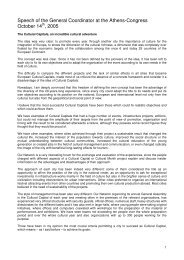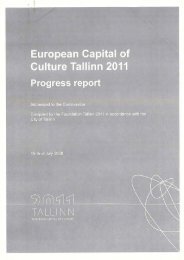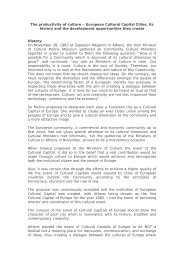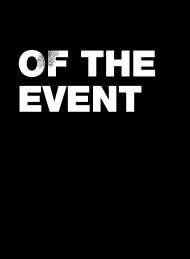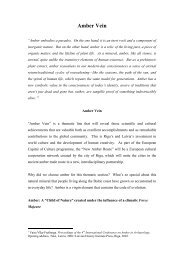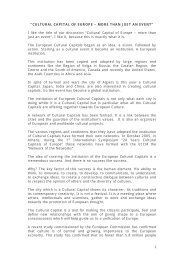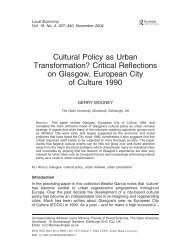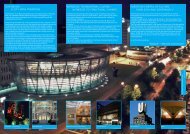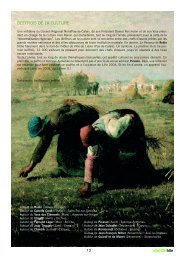Concise.pdf - Brugge Plus
Concise.pdf - Brugge Plus
Concise.pdf - Brugge Plus
- No tags were found...
Create successful ePaper yourself
Turn your PDF publications into a flip-book with our unique Google optimized e-Paper software.
THE CHALLENGE: TO HAVE AS MANY<br />
PEOPLE AS POSSIBLE SHARE IN<br />
THE ENTHUSIASM THAT ARTISTS<br />
ARE WORTHY OF<br />
Making an evaluation of communication in a project like BRUGGE 2002, Cultural Capital<br />
of Europe is no easy business. The complex task falling to the communication department<br />
consisted in channelling the abundance and diversity of information and objectives. How,<br />
when and in respect of what should the various target groups be informed, made aware<br />
and/or motivated That was the central question that formed the keynote for the communication<br />
policy. Moreover, these various assignments were given different shades of emphasis<br />
according to the phase of the project in which they were carried out. In this overall evaluation<br />
we shall limit ourselves to looking at a few of the important main themes running<br />
through the communication, and the strengths and weaknesses thereof.<br />
The communication policy:<br />
a child of many fathers…<br />
From as early as 1995 the Bruges city council was already carrying out a kind of preliminary<br />
communication campaign. A campaign aimed at the general public and a<br />
European press and lobbying campaign saw to it that Bruges’ candidacy for the title<br />
“Cultural Capital of Europe” was on everyone’s lips. This phase ended with a happening<br />
at the Markt on November 13 th 1997.<br />
In 1998 Bart Caron was given the task, as “cultural researcher”, to outline this cultural<br />
project in greater detail in terms of content, in close consultation with numerous<br />
institutions and organisations in the cultural and economic sector. On May 28 th<br />
1998 the title of Cultural Capital was awarded to Bruges. The final report of the<br />
preparatory phase was subsequently also communicated to the press and public.<br />
On June 1 st 1999 intendant Hugo De Greef set to work with his five-strong team, and<br />
from then on work was carried out – under his supervision – on the development of<br />
a communication policy. A communication department was put together under the<br />
leadership of Tine Verschaeve and later Kristine Demulder (ad interim). They did a<br />
large amount of work through to the end of 2000 and continued assembling the<br />
team of communication staff, among other things. Besides the press officer, an officer<br />
responsible for domestic promotion was recruited, as well as a production manager<br />
and sponsorship manager. Toerisme Vlaanderen (the Tourist Office for<br />
Flanders) seconded a staff member to<br />
prepare and outline Toerisme<br />
Vlaanderen’s tasks and objectives<br />
“from the field”.<br />
When Reinhilde Weyns began work<br />
as communication manager in<br />
September 2000, a great deal of<br />
preparatory work had already been<br />
done. From this point on, the communication<br />
had to gain momentum,<br />
and for this reason three press<br />
employees, a production employee<br />
and a staff member for domestic promotion<br />
were added to the communi-<br />
European Biennial for Graphic Art<br />
51<br />
CONCISE<br />
© BERT KELLER



